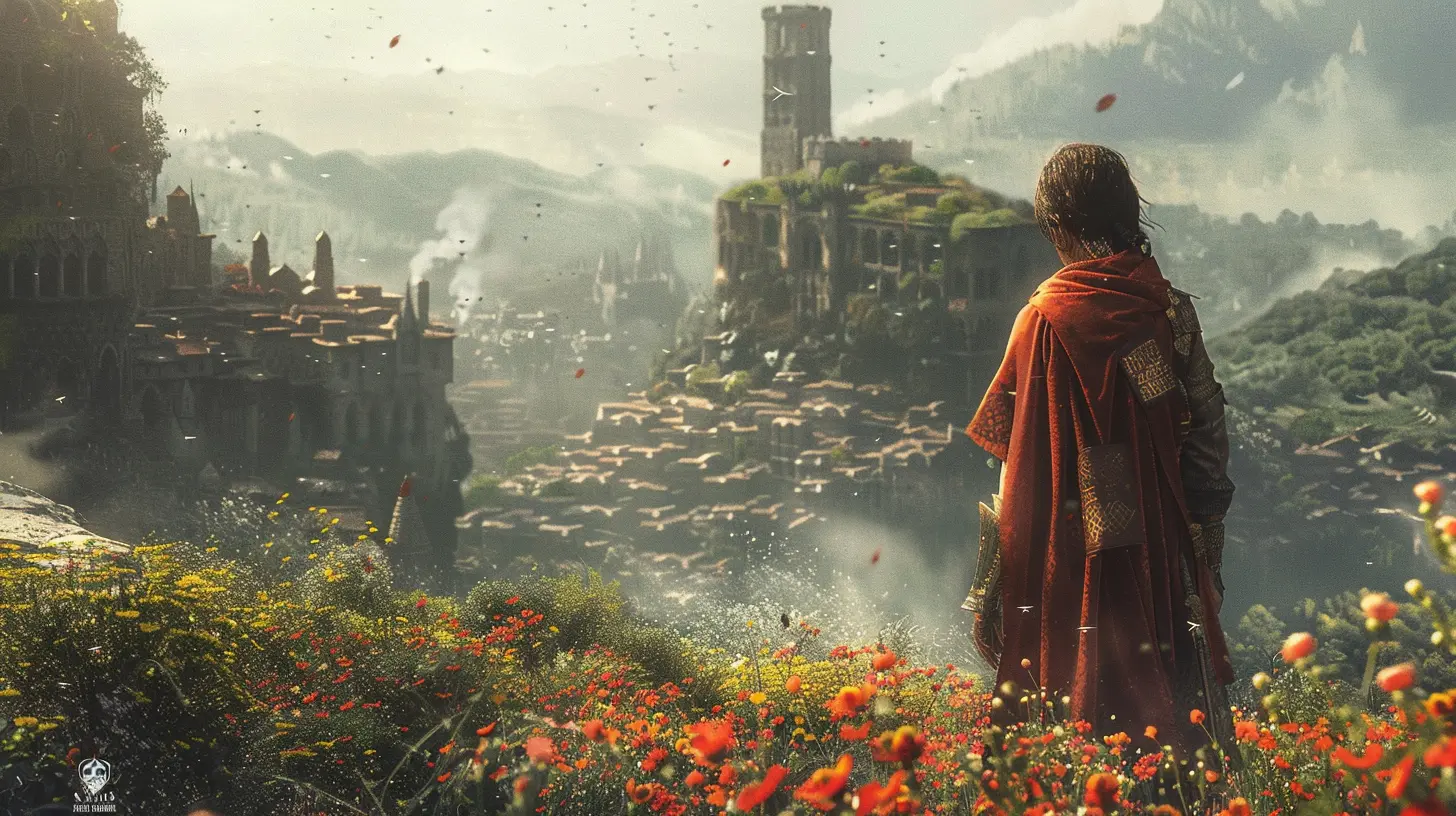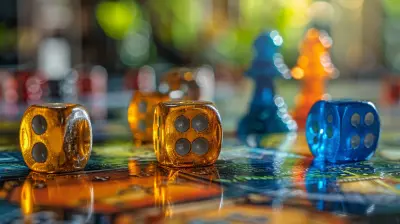Narrative Layers: How Subplots Enrich the Main Arc in Games
2 June 2025
Storytelling in games has come a long way since the days of Pong and Tetris. Back then, gameplay was king, and story? Well, it was more of an afterthought, if it existed at all. Today, though, we’re seeing games rivaling movies and novels in their narrative depth. A huge part of what makes these stories so captivating is the inclusion of subplots. These narrative layers go beyond the basic "save the world" or "defeat the bad guy" premise and bring richness to the game's main arc. But what exactly do subplots do? And why do they matter so much in gaming?
If you’ve ever felt emotionally connected to a character or deeply invested in a game’s world, chances are the subplots had a role to play. Let’s dive in and see how these narrative threads act as the secret sauce that makes game stories memorable.
What Are Subplots in Games? (And Why Should You Care?)
Subplots are like the seasoning in your favorite dish. Sure, the main plot is the meat and potatoes of the story—it’s what keeps the momentum going. But without subplots? Everything feels bland. Subplots are those smaller, side stories that either run parallel to or intersect with the main arc. They might follow supporting characters, explore the lore of the game world, or delve into personal conflicts.Think of them as the depth in a painting. On the surface, you have the main picture, but subplots add all the little details that make the whole thing pop. Without them, a game risks feeling flat and one-dimensional.
For example: in The Last of Us Part II, the main journey centers on Ellie’s quest for revenge. But subplots like Abby’s backstory and Dina’s relationship with Ellie add emotional complexity, making the story all the more impactful. Without those additional layers, the game wouldn't hit nearly as hard.
How Subplots Elevate the Main Arc
So, why are subplots such a big deal? Because they don’t just add filler—they actively enrich the main story. Here are some ways they do that:1. Deepen Character Development
Let’s face it: nobody wants one-dimensional characters. If the main plot is all we get, we might only scrape the surface of who a character really is. Subplots allow us to see them in different lights—how they act under pressure, in relationships, or when they have something personal at stake.For instance, in Red Dead Redemption 2, Arthur Morgan’s interactions with the members of the Van der Linde gang serve as subplots. These smaller stories give us insight into Arthur’s personality, his doubts, and his loyalties. Without these moments, players might not feel as emotionally attached to him or his ultimate fate.
2. Build the Game World
Subplots are one of the best tools for world-building. Ever played a game where the lore feels so rich and alive that you forget it’s fictional? That’s often thanks to subplots. These side stories explore the world’s history, factions, cultures, and conflicts, making the setting feel dynamic and real.Take The Witcher 3: Its sprawling open world is brimming with subplots. From helping a blacksmith reunite with his missing son to investigating ghostly curses, these smaller narratives flesh out the game’s moral gray areas and political intricacies. By the time you return to the main quest, you feel like you’ve truly lived in Geralt’s world.
3. Provide Emotional Contrast
The main plot is usually heavy—it’s the driving force, after all. Subplots can offer moments of levity, intimacy, or even heartbreak that contrast with the main story’s tone. This emotional variety keeps players engaged and prevents fatigue. It’s like switching up the tempo in a song; it keeps things fresh.In Mass Effect 2, the loyalty missions for your crew members stand out as some of the series’ best subplots. These missions allow you to bond with your teammates, learn about their pasts, and shape your relationships. They break up the urgency of stopping the Collectors, giving the player a more personal stake in the overarching narrative.
4. Foreshadowing and Themes
Subplots often contain subtle cues that mirror or foreshadow the main arc. This kind of narrative layering makes the story feel cohesive and adds a sense of inevitability when the pieces fall into place.Consider Horizon Zero Dawn. While Aloy’s main mission is to uncover her identity and stop a technological apocalypse, many subplots revolve around themes of loss, survival, and legacy. These smaller tales reinforce the game’s larger message, making the finale all the more resonant.
The Balance: When Subplots Go Wrong
Okay, so subplots are awesome. But there’s a catch—they need to be done right. Too many subplots can overwhelm the player and dilute the main story. On the flip side, weak or irrelevant subplots can feel like filler content, adding nothing meaningful to the experience.A good subplot should:
- Tie back to the main arc in some way (even if it’s just thematically).
- Feel rewarding to the player—whether that’s through character development, loot, or emotional payoff.
- Be paced well. Nobody wants to get bogged down in endless fetch quests when the world is about to end.
A classic example of subplots gone wrong? Some players found the side missions in Assassin’s Creed: Odyssey to be repetitive and disconnected from the main story. Without a strong narrative payoff, these felt more like chores than compelling subplots.
Designing Subplots: Lessons for Game Developers
If you’re a developer (or just curious about how games are made), crafting effective subplots is an art form. Here are some tips:1. Make It Personal
Subplots that focus on relationships, character arcs, or moral dilemmas often hit harder than broad, impersonal storylines. Give players choices that have real consequences in these side stories.2. Integrate Them Naturally
Subplots should feel like a natural extension of the world, not an afterthought. Don’t just slap in a random side story for the sake of padding out playtime. Games like Cyberpunk 2077 excel at this—its subplots feel woven into the world’s fabric.3. Reward Engagement
Whether it’s through narrative revelations, rare items, or emotional closure, players should feel like their investment in a subplot was worth it. Nobody wants to spend hours on a quest that leads to a dead end.Why Subplots Stick With Us
Here’s the thing: Subplots are where many games create their most iconic moments. Sure, you might remember the climax of the main arc, but those quiet, character-driven side stories? Those are the ones that linger. They’re what make us replay games years later, just to see if we missed something.So next time you’re playing your favorite RPG or action game, take a moment to appreciate the subplots. Whether they’re making you laugh, cry, or rethink your choices, they’re doing more than just filling up your quest log—they’re making the world feel alive.
all images in this post were generated using AI tools
Category:
Interactive StorytellingAuthor:

Lucy Ross
Discussion
rate this article
3 comments
Dominique Conrad
This article effectively highlights how subplots can deepen player engagement and provide emotional resonance. By intertwining personal stories with the main narrative, games create richer experiences, yet the challenge lies in maintaining focus without overwhelming the core storyline.
June 11, 2025 at 2:48 PM

Lucy Ross
Thank you for your insightful comment! I completely agree that subplots add depth and emotional connection, but maintaining clarity in the main narrative is crucial for impactful storytelling.
Icarus Acevedo
Subplots deepen player engagement.
June 11, 2025 at 3:21 AM

Lucy Ross
Absolutely! Subplots add complexity and emotional depth, allowing players to connect more deeply with the story and characters, enhancing their overall gaming experience.
Caelestis McFarland
Subplots: the secret sauce that makes game stories extra tasty!
June 2, 2025 at 4:31 AM

Lucy Ross
Absolutely! Subplots add depth and complexity, enriching the main narrative and enhancing player engagement.



